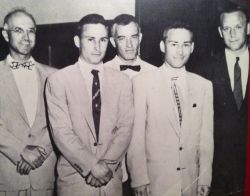Organ transplantation techniques

Peter Medwar, discovered why attempts to transplant organs by Carrel and others had been unsuccessful; the immune system saw the graft as foreign tissue and rejected it.
In the 1950’s, Joseph Murray realised that as identical twins share most of their physiology, tissue from one might not be rejected by the other’s immune system. Through experiments on dogs, he developed a technique which induced a kidney to function once it had been transplanted. He used the same technique to perform the first human kidney transplant between identical twins in December 1954.
About two years later, Donnall Thomas carried out the first bone-marrow transplants, showing that it was possible to take bone marrow from a healthy individual and infuse it into a blood vessel of leukaemia patient. The bone marrow cells travelled to the appropriate places in the body, where they repopulated the bone marrow with normal cells. Unfortunately the immune cells of the donated marrow caused a fatal rejection reaction in the new host – GVH.
Both Murray and Thomas showed that rejection could be prevented by use of ionising radiation or cytotoxic drugs to suppress the immune system until the body becomes tolerant of the new tissue.
Last edited: 11 November 2014 11:47
